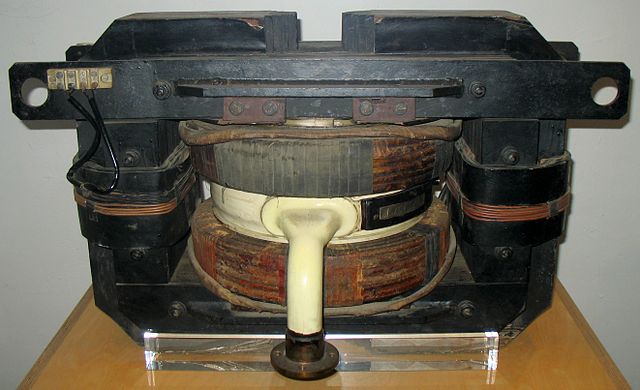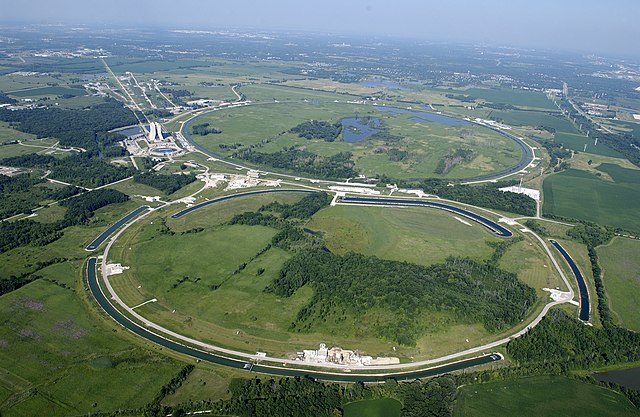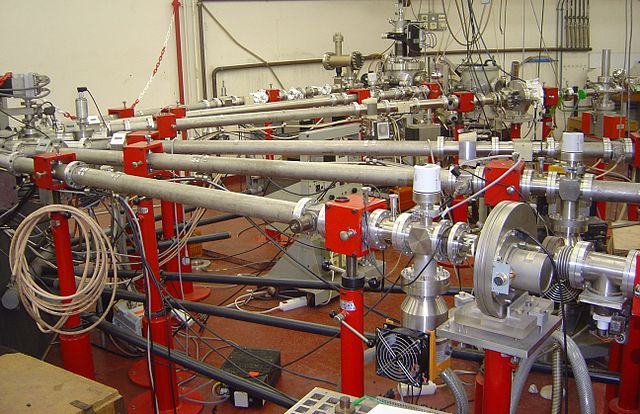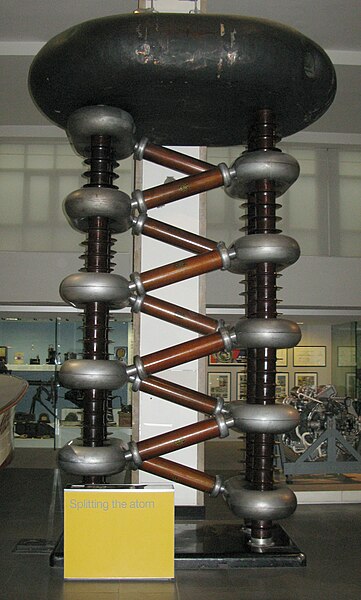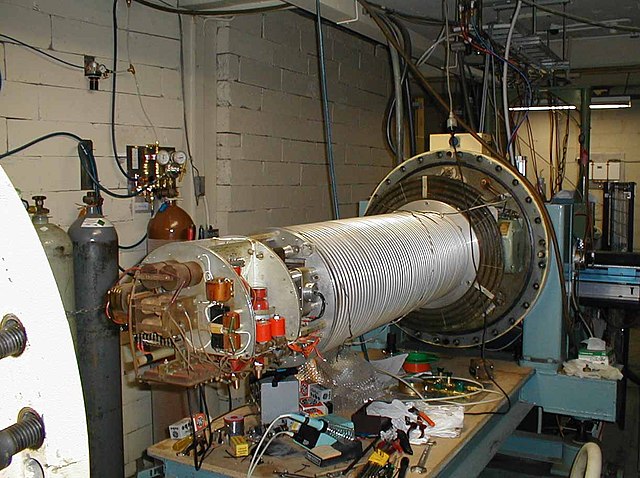A betatron is a type of cyclic particle accelerator for electrons. It consists of a torus-shaped vacuum chamber with an electron source. Circling the torus is an iron transformer core with a wire winding around it. The device functions similarly to a transformer, with the electrons in the torus-shaped vacuum chamber as its secondary coil. An alternating current in the primary coils accelerates electrons in the vacuum around a circular path. The betatron was the first machine capable of producing electron beams at energies higher than could be achieved with a simple electron gun, and the first circular accelerator in which particles orbited at a constant radius.
One of the first betatrons built by Donald Kerst (visible right) at University of Illinois, 1940. Its 4-ton magnet could accelerate electrons to 24 MeV.
A German 6 MeV betatron (1942)
A 35 MeV betatron used for photonuclear physics at the University of Melbourne.
A particle accelerator is a machine that uses electromagnetic fields to propel charged particles to very high speeds and energies, and to contain them in well-defined beams.
The Tevatron (background circle), a synchrotron collider type particle accelerator at Fermi National Accelerator Laboratory (Fermilab), Batavia, Illinois, USA. Shut down in 2011, until 2007 it was the most powerful particle accelerator in the world, accelerating protons to an energy of over 1 TeV (tera electron volts). Beams of protons and antiprotons, circulating in opposite directions in the rear ring, collided at two magnetically induced intersection points.
Beamlines leading from the Van de Graaff accelerator to various experiments, in the basement of the Jussieu Campus in Paris.
A Cockcroft–Walton generator (Philips, 1937), residing in Science Museum (London).
A 1960s single stage 2 MeV linear Van de Graaff accelerator, here opened for maintenance


